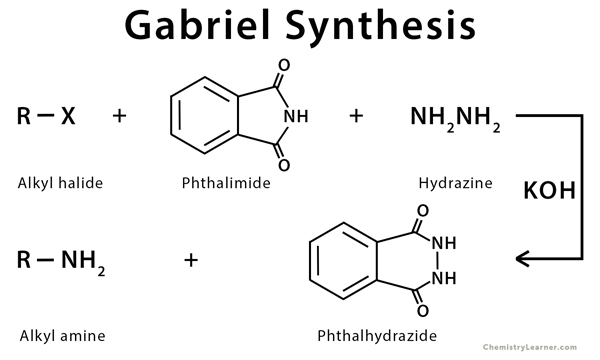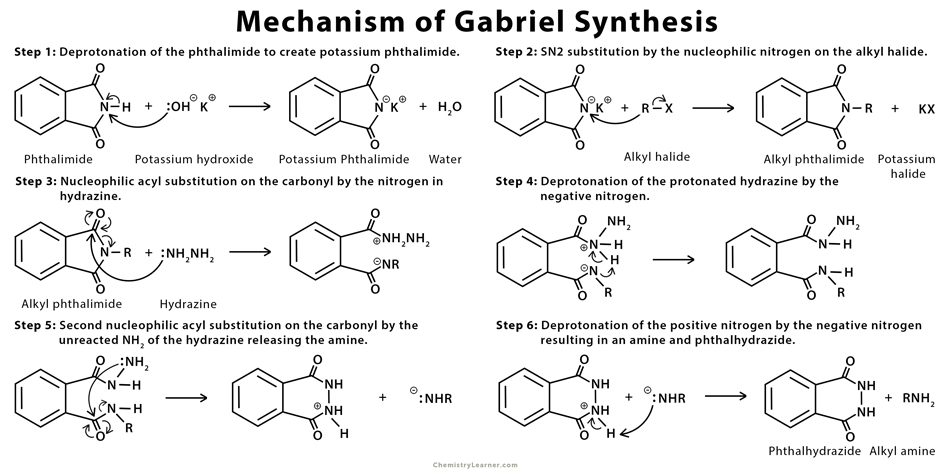Home / Organic Chemistry / Gabriel Synthesis
Gabriel Synthesis
Table Of Contents
Definition: What is Gabriel Synthesis?
The Gabriel synthesis is a chemical reaction that transforms primary alkyl halides into primary amines. It is a type of SN2 reaction, except that it does not produce any ammonium salts. Gabriel synthesis is also called Gabriel phthalimide synthesis because phthalimide is used in this reaction along with a base [1-3].
The history of Gabriel Synthesis goes back to 1887 when German chemist Siegmund Gabriel discovered it with his partner James Dornbush.
Example of Gabriel Synthesis
Gabriel synthesis can be used to convert chloroethane into ethylamine.
Mechanism of Gabriel Synthesis
The reaction takes place through a six-step process [3-6].
References
- Definition – Masterorganicchemistry.com
- Definition – Byjus.com
- Definition and mechanism – Chem.libretexts.org
- Mechanism – Name-reaction.com
- Mechanism – Ochempal.org
- Mechanism – Chem.ucalgary.ca







